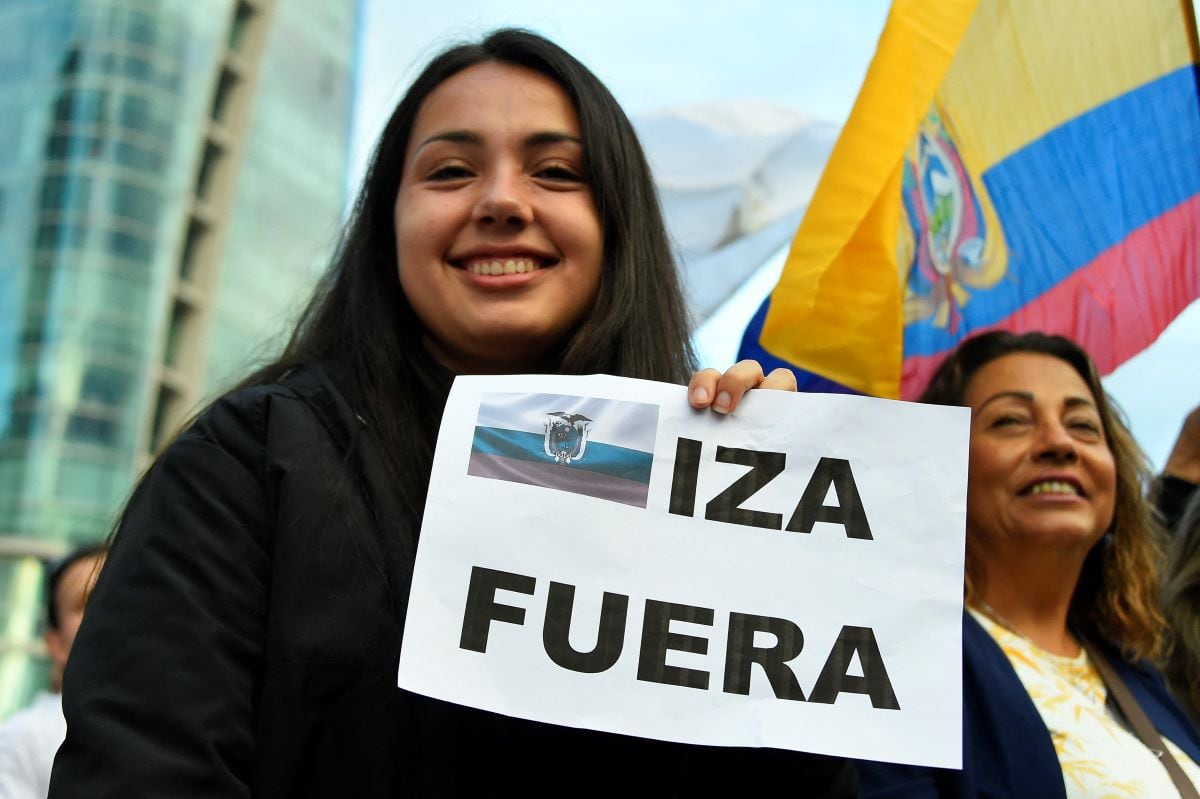Where there was abundance, today there are markets with empty shelves. The peppers fall apart in the hands of how rotten they are. Two weeks of protests against the high cost of living in Ecuador They hit merchants and consumers.
“The situation remains difficult because there is no one to bring food from the (Andean) Sierra”tells AFP Rosa, an indigenous woman who preferred to omit her last name and who has been selling vegetables for 15 years in a market in Guayaquil (southwest).
LOOK: Guillermo Lasso lifts the state of exception for indigenous protests in Ecuador
In the second city Ecuador -port and commercial center of the country- Andean foods such as potatoes and corn (soft corn) are scarce due to the mobilizations that began on June 13 at the initiative of the powerful Confederation of Indigenous Nationalities (Conaie, from the left).
The roadblocks, which punished more than half of the country’s 24 provinces, take their toll on the Food Transfer Terminal, the only wholesale market in Guayaquil.
LOOK: Correa asks Lasso to call early elections in Ecuador
Every day, that supply center received 3,000 trucks with food that came down from the mountains, but now 70% does not arrive due to road closures.
The shortage made food more expensive and affected consumers, who also have difficulty obtaining eggs, chicken or gas for domestic use, which is distributed in 15-kg tanks.

LOOK: Protests in Ecuador: “There are sectors that aim at destabilization and use violence”
“Everything is very expensive. Before they sold me a pound of tomato for 50 cents and now it costs me 1 dollar,” says Silvana Quimí, a housewife from Guayaquil, where prices have “shot up.”
Some 14,000 indigenous people protest in the country to demand relief for the high cost of living that worsens poverty in their territories. Among the range of claims they ask to reduce fuel prices and control the price of agricultural products. The peasants claim to be harvesting at a loss.
markets closed
A little less than 300 kilometers to the northeast, the markets of the capital are a shadow of the splendor of other times. In Quito alone, some 10,000 indigenous people mobilize daily against the government of right-wing Guillermo Lasso.
Mariana Morales hasn’t opened her stall in the popular Santa Clara, in the north of the city, for almost a week, and her products are beginning to deteriorate.
Where once fresh fruit and vegetables were overflowing, there are empty trays and tarp-covered stalls.
Due to its proximity to one of the protest hotspots, the market closed for four days and barely reopened on Saturday.
“The pepper was flamantito, and now you see, it’s already lost,” says Morales, while sinking his fingers into the rotten products.
Access to Quito has been blocked intermittently, while local authorities organize operations to prevent protesters from holding trucks with food.
A group of soldiers who were protecting a food convoy was attacked on Thursday on the outskirts of the capital, leaving 17 soldiers injured.
The government estimates losses of 50 million dollars a day due to indigenous protests.

Triple prices
Morales has not gone to the wholesale markets to stock up due to high prices and the lack of public transportation in the midst of the demonstrations.
For “the sack of carrots, which cost 25 dollars, now they ask for 100”, he complains.
It gives the 69-year-old woman a “conscience charge” to ask for a dollar for a branch of long onion, when a bundle of ten cost 50 cents.
The products that manage to arrive from the coast are through the roof. A bunch of 12 bananas, which cost a dollar, doubled its price, when available.
“We are in a banana country and because of this situation (of protests) what there is costs an arm and a leg,” says Agustín Pazmiño, a 56-year-old vendor in Quito.
A look of affliction appears on his face and he assures that since gasoline prices last rose in October, food prices have risen even more.
In just over a year, diesel rose 90% and super gasoline 46%.
The government maintains that lowering them, as the indigenous people demand, would cost the State more than 1,000 million dollars a year in more subsidies.
Lasso “in the campaign made us see heaven, but we are living hell (…) I supposedly voted for the least bad and it came out worse,” Pazmiño laments.
Source: Elcomercio
I, Ronald Payne, am a journalist and author who dedicated his life to telling the stories that need to be said. I have over 7 years of experience as a reporter and editor, covering everything from politics to business to crime.

:quality(75)/cloudfront-us-east-1.images.arcpublishing.com/elcomercio/G7HL3EARLNGT7H224UVFFGSZOU.jpg)

:quality(75)/cloudfront-us-east-1.images.arcpublishing.com/elcomercio/ONIQB2CZFZDBZHHJGSUWOTXAOI.jpg)
:quality(75)/cloudfront-us-east-1.images.arcpublishing.com/elcomercio/OPDZS2BV65HFPJGZDNJV6HTHYQ.jpg)
:quality(75)/cloudfront-us-east-1.images.arcpublishing.com/elcomercio/DWYEKUKWJFBGFGCKU42Y5U6L5A.jpg)
:quality(75)/cloudfront-us-east-1.images.arcpublishing.com/elcomercio/4KAZWVAL4FB5XEQI7W5A6Q4HXE.jpg)
